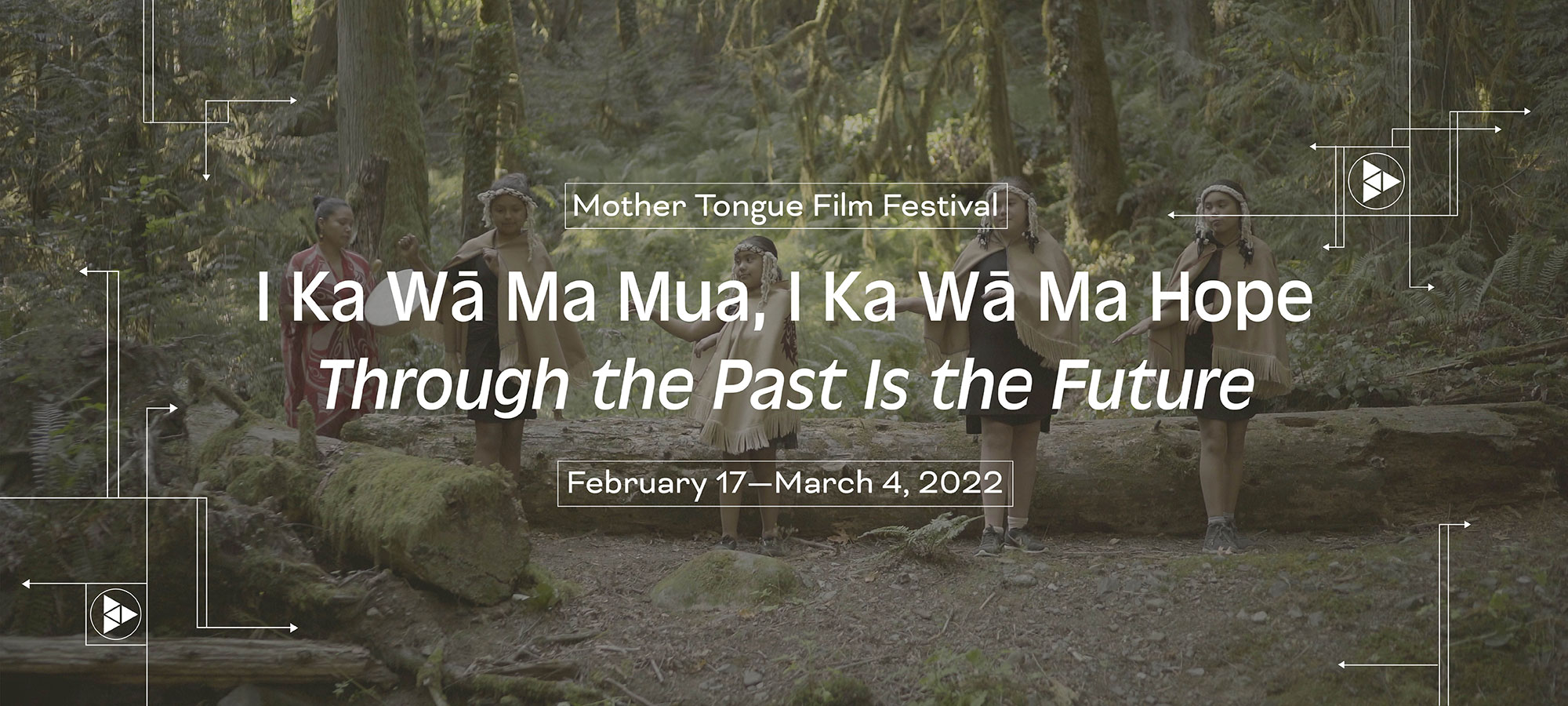

The ʻŌlelo Hawaiʻi proverb i ka wā ma mua, i ka wā ma hope (through the past is the future) evokes an awareness that our ancestors provide us with a foundation for the futures we create. Our understandings of the past are as dynamic as our own living cultures.
The 2022 Mother Tongue Film Festival reflected on the legacies of our ancestors, whether they are manifested in the words we speak, songs we sing, land and sea we continue to use, documents we read, or the audiovisual recordings we watch. While acknowledging the burdens of the past, we focus on its gifts and its lessons to help us to build more equitable futures.
The seventh annual festival took place February 17 to March 4, 2022. Films marked with are still available to stream in full on our website.
Individuals and communities make their realities by molding the world and its materials with their hands, bodies, and words. In this bundle of films, we foreground the ways communities engage one another through making drums, cloth, books, and tipi, and how in doing so, they challenge both outsiders and themselves to see the world differently.
The Irish poet Oscar Wilde once said, “Imitation is the sincerest form of flattery that mediocrity can pay to greatness.” While that may serve as a general compliment for some, in the world of film, representation is everything. The accompanying panel brought together marginalized filmmakers to discuss the implications of misrepresentation in film. We explore what it means to have their cultures properly represented and the challenges that they have faced in the entertainment industry in order to practice their craft.
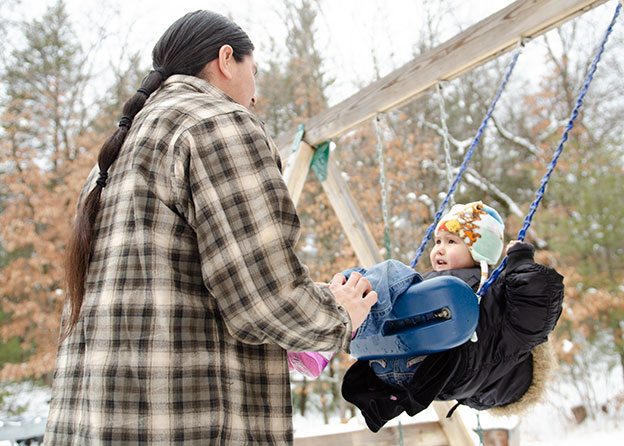
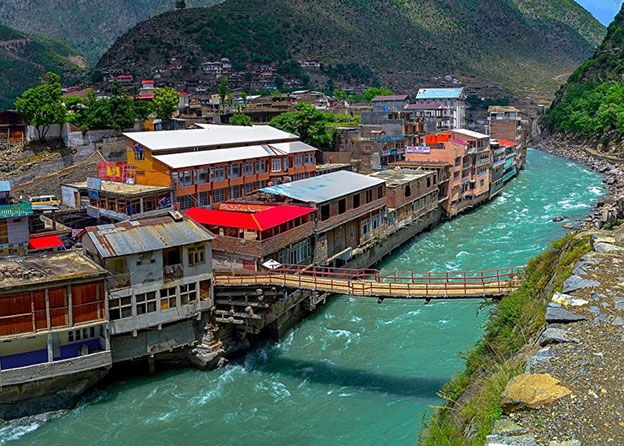
Language is the strongest connection we have to how our ancestors understood and interacted with the world and each other. Language reclamation goes beyond language learning and daily use to reclaiming these relationships. The films presented here highlight different ways of learning, through legacy documentation, situating language in the home, youth-centered approaches, and creating new modes of expression. Through this learning comes spiritual reconnecting to the land and ancestors, and strengthening of community, new and old.
Music has long been a way in which communities express themselves and celebrate mother tongues. Collectively these music videos illustrate how communities challenge stereotypes about what is and is not traditional and how they find new ways to express themselves through creative use of language, imagery, and range of musical genres.
The word survivance is a combination of “survival” and “resistance.” For Indigenous communities, the term emphasizes moving beyond narratives of tragedy and lack of agency. Whether through immigration, illness, suicide, or the many unknowns that life brings, survivance is explored in a variety of ways within these films. The unknowns make us who we are and mold us into stronger versions of ourselves. The mere act of existing is both a political statement and a reminder that the original cultures and peoples are still here and thriving amid dominate narratives and agendas.
Introduced by Tom Vick (Curator of Film, National Museum of Asian Art), filmmaker Burcu Esenç and producer Umut Egitimci and Mary Linn (Curator of Language and Cultural Vitality, Center for Folklife and Cultural Heritage) focus on reconnections made during the filming I Had a Dream (Bir Rüya Gördüm), the life of Tevifik Esenç, and the wider history of the Ubykh language. Co-presented with the National Museum of Asian Art.
Our closing event offered a single-night sneak preview of director Hinaleimoana Wong-Kalu’s latest feature film, The Healer Stones of Kapaemahu. This was her third screening at the Mother Tongue Film Festival, following the feature documentary Leitis in Waiting in 2019 and the animated short Kapaemahu in 2021.
Monday, February 21, 3:30 pm ET
The Irish poet Oscar Wilde once said, “Imitation is the sincerest form of flattery that mediocrity can pay to greatness.” While that may serve as a general compliment for some, in the world of film, representation is everything. This panel brought together marginalized filmmakers to discuss the implications of misrepresentation in film. We explored what it means to have their cultures properly represented and the challenges that they have faced in the entertainment industry in order to practice their craft.
Part 1: Wednesday, February 23, 11:30 am ET
Part 2: Wednesday, February 23, 12:30 pm ET
Co-presented with Documentary Educational Resources and the National Anthropological Archives
This two-part roundtable considered the complicated legacies of the Yanomamö Film Series (1969–1976), a groundbreaking ethnographic media project that expanded the boundaries of documentary. Distributed by Documentary Education Resources (DER) and archived in the Smithsonian’s National Anthropological Archive, the series emerged from a collaboration between anthropologist Napoleon Chagnon (1938–2019), filmmaker Tim Asch (1932–1994), and Yanomamö communities in southern Venezuela and northern Brazil.
Friday, February 25, 11 am ET
Language reclamation goes beyond language learning and daily use to reclaim relationships with ancestors, the land, and community. The films presented in this program represent different ways of learning, through legacy documentation, situating language in the home, youth-centered approaches, and creating new modes of expression. Carly Tex, director of the Advocates for Indigenous California Languages Survival (AICLES), led the discussion on the challenges of language reclamation in North America with Ron Corn, Jr., featured in Living Language: Menominee Language Revitalization, and Quirina Geary, a Tamien and Mutsun cultural practitioner who is learning her language through the Breath of Life approach featured in Chasing Voices.
Monday, February 28, noon ET
Co-presented with the National Museum of Asian Art
Introduced by Tom Vick (Curator of Film, National Museum of Asian Art), filmmaker Burcu Esenç and producer Umut Egitimci and Mary Linn (Curator of Language and Cultural Vitality, Center for Folklife and Cultural Heritage) focused on reconnections made during the filming I Had a Dream (Bir Rüya Gördüm), the life of Tevifik Esenç, and the wider history of the Ubykh language.
Thursday, March 3, 1 pm ET
Every year, Mother Tongue presents a roundtable with women directors to honor the role of women in language transmission. This year, we brought together women directors from communities in Canada, the United States, and Mexico to discuss the power of language in their films, expanding on the courage that is required in portraying difficult realities for a more balanced future.
Thursday, March 10, 6:30 pm ET
In a bonus presentation, the Columbia University School of the Arts co-hosts a free screening of the documentary feature Helena of Sarayaku, the story of a teenager who travels to her motherland in the Ecuadorian Amazon for the traditional Uyantza Raymi festival, then is confined there at the start of the COVID-19 pandemic. The film is available to stream starting Monday, March 7, in advance of the Q&A with director Eriberto Gualinga on March 10.
Thursday, March 10, 6:30 pm ET
University of Montana in Missoula, Montana
In partnership with the Institute on Collaborative Language Research (CoLang), hosted by the University of Montana and Chief Dull Knife College, we offer a free screening of the feature film Sooyii on Blackfoot territory. Afterward, hear from Jesse DesRosier, the language and dialect coach for the film, and join a discussion and Q&A on language reclamation and issues of representation in the film.
The Mother Tongue Film Festival is a public program of Recovering Voices, a collaboration between Smithsonian’s National Museum of Natural History, the National Museum of the American Indian, the Center for Folklife and Cultural Heritage, and the Asian Pacific American Center.
This program received federal support from the Latino Initiatives Pool, administered by the Smithsonian Latino Center, and the Asian Pacific American Initiatives Pool, administered by the Smithsonian Asian Pacific American Center. Additional support was provided by Columbia University School of the Arts, Documentary Educational Resources, the Embassy of Canada to the United States, the Québec Government Office in Washington, Georgetown University Department of Anthropology, The Elizabeth and Whitney MacMillan Endowment, Wick and Bonnie Moorman, the Environmental Film Festival in the Nation’s Capital, and Ferring Pharmaceuticals.
Tzutu Kan
Guatemala
Tzʼutujil Maya
2021
3 min.
Music Video
“Ixim Ulew” is an offering to that which sustains, to that which promotes growth and wellbeing, to the central form of sustenance Maya communities rely on today as they dig deep into the past. Honoring the sacred role of corn in allowing the existence of his people, Maya hip-hop pioneer Tz’utu Kan raps in his native language of Tzʼutujil Maya. The Mother Tongue Film Festival is honored to host the world premiere of “Ixim Ulew,” a prayer of gratitude to corn.
Caroline Monnet (Anishinaabe)
Canada
English, French, Anishinaabemowin
2022
81 min.
Narrative Feature
Mani (Kawennáhere Devery Jacobs), a master’s student, returns to the reserve in northern Quebec where she grew up. Resolved to reintegrate into her former home, she gets involved in the debate about a referendum regarding the free sale of alcohol. Laura (Pascale Bussières), a bootlegger, pockets the profits she makes under the protection of the band council and her partner Raymond (Jacques Newashish), who holds Mani responsible for the death of his daughter. Two radically opposed women divide the community as they determine the best path to independence.
AJ Wilhelm
Haiti
Haitian Creole
2021
11 min.
Documentary Short
As a gifted teenager, Jérôme “Junior” Simeon was recruited by top Haitian roots music group Racine Mapou de Azor and spent twenty years touring the world. When the lead singer of his band dies unexpectedly, Junior’s high-profile career comes to a shocking halt, and he suddenly faces an uncertain future for himself and his legacy.
Arun Wolf
India
Gujarati
2015
23 min.
Documentary Short
This short film explores the stories and artistry of mata ni pachedi, a traditional ritual textile art form from western India. The words and work of artist Jagdish Chitara guide the viewer through the poignant craft processes and contexts of his tradition.
Arun Wolf
India
Hindi, English
2015
13 min.
Documentary Short
Renowned Gond artist Bhajju Shyam gathers together the myths and beliefs of his community from central India in the handmade book Creation. This short film dives between the pages to uncover how the book was conceptualized and physically produced.
Maria Lino
Peru
Spanish, Shipibo
2012
29 min.
Documentary Short
Ritmos Ancestrales (“Ancestral Rhythms”) features Olga Mori, a Shipibo artist and healer, from Yarinacocha, Pucallpa, in the Peruvian Amazon. Olga draws the traditional imagery of her culture while singing an icaro, a song in Shipibo, her mother tongue, that inspires the imagery of her drawing. She expresses the importance that Shipibo women and girls continue the tradition of their art.
Shawara Maxakali
Charles Bicalho
Brazil
Maxakali
2019
14 min.
Animated Short
Mãtãnãg follows the spirit of her husband, killed by a snake, to the village of the dead. Together they overcome the obstacles that separate the earthly world from the spirit world. Once in the land of the spirits, things are different: other ways govern the supernatural. Spoken in the Maxakali language, Mātãnāg is based on a traditional story of the Maxakali people. The illustrations for the film were made in a workshop at Aldeia Verde, in the municipality of Ladainha, in the state of Minas Gerais, southeast Brazil.
Alexis Anoruk Sallee (Inupiaq)
United States
English
2021
1 min.
Documentary Short
“Long before others defined our beauty, our ancestors carried markings of pride.” This documentary short, filmed on the traditional territories of the Lower Tanana Dene Peoples and produced for Smithsonian Channel, shares the beauty of those markings. Their reclaiming is sacred and specific to Indigenous communities and is not to be appropriated.
Aleksei Vakhrushev
Russia
Russian, Inuit (Siberian Yupik), Chukchi
2018
85 min.
Documentary Feature
The history of the Indigenous peoples of Chukotka, Russia, of the last hundred years is the story of the alienation from their roots. The film explores the overcoming of this alienation, weaving together two distinct storylines and film techniques.
Conrad Lihilihi
Hawai‘i
English, Hawaiian Pidgin
2020
20 min.
Dramatic Short
Aspiring actor Ikaika is struggling with the trendy facade of diversity spreading through Hollywood when his small-town cousin, Kekoa, unexpectedly visits from Hawai‘i, bringing him a much-needed dose of ohana and aloha.
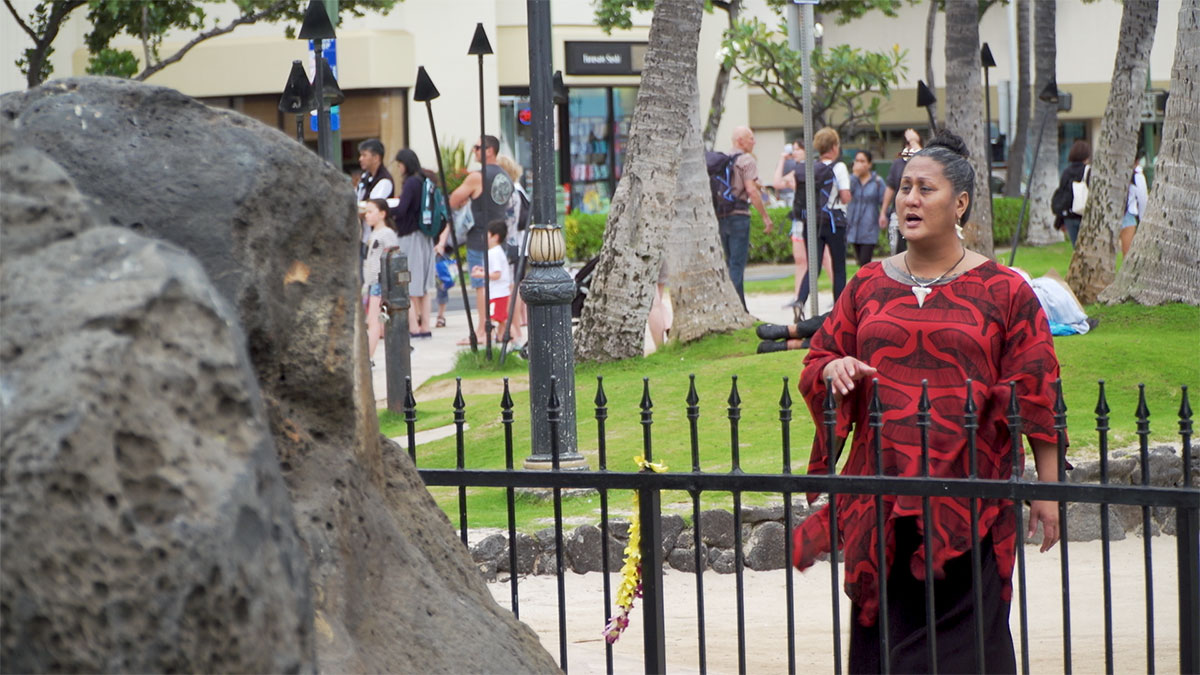
Hinaleimoana Wong-Kalu
Dean Hamer
Hawai‘i
‘Ōlelo Kanaka Niihau
2022
56 min.
Documentary Feature
On Honolulu’s famed Waikiki Beach stand four giant boulders placed as a tribute to the four legendary mahu—individuals of dual male and female spirit—who brought the healing arts from Tahiti to Hawai‘i long ago. Although the stones have survived for centuries, their story has been hidden and the respected role of mahu erased. The Healer Stones of Kapaemahu documents the trail of post-colonial suppression through the eyes of a Native Hawaiian director—Wong-Kalu identifies as mahu—and uses rare archival materials, new historical findings, and vivid animation to bring the complete story back to life. This is the first feature documentary to be presented in ‘Ōlelo Kanaka Niihau, the only form of the Hawaiian language unbroken by foreign contact.
Finn Ryan
United States
Menominee, English
2013
5 min.
Documentary Short
This short documentary features Ron Corn Jr., one of fewer than twenty fluent speakers of the Menominee language in the Great Lakes region, and his efforts to keep the language alive. The film explores the relationship between culture and language as Ron teaches his daughter, Mimikwaeh, to be a one of the first speakers of her generation.
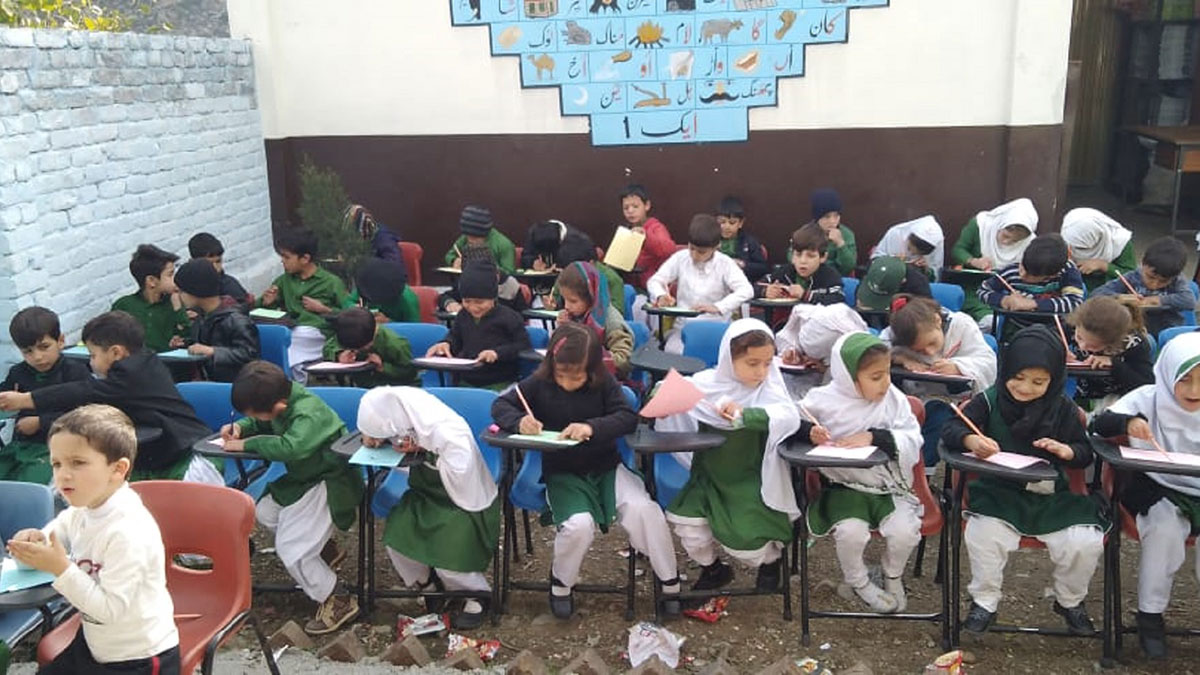
Muhammad Daud Khan
Pakistan
Torwali, Urdu, English
2021
5 min.
Documentary Short
Founded by Zubair Torwali and colleagues in 2007, the research and education institute Idara Baraye Taleem wa Taraqi works to revitalize the Torwali language spoken in Swat, Pakistan. The short film focuses on the educational program in Torwali, with a mention of other holistic efforts.
Ulivia Uviluk (Inuk) in collaboration with the Wapikoni team
Canada
Inuktitut, English
2019
9 min.
Documentary Short
Inuktitut Languages in the 21st Century explores the possibilities the internet offers in relation to Inuktitut, a complex language with several dialects that vary from one generation to the next and is threatened by dominant languages. Are there solutions that allow these technologies to be allies, not enemies?
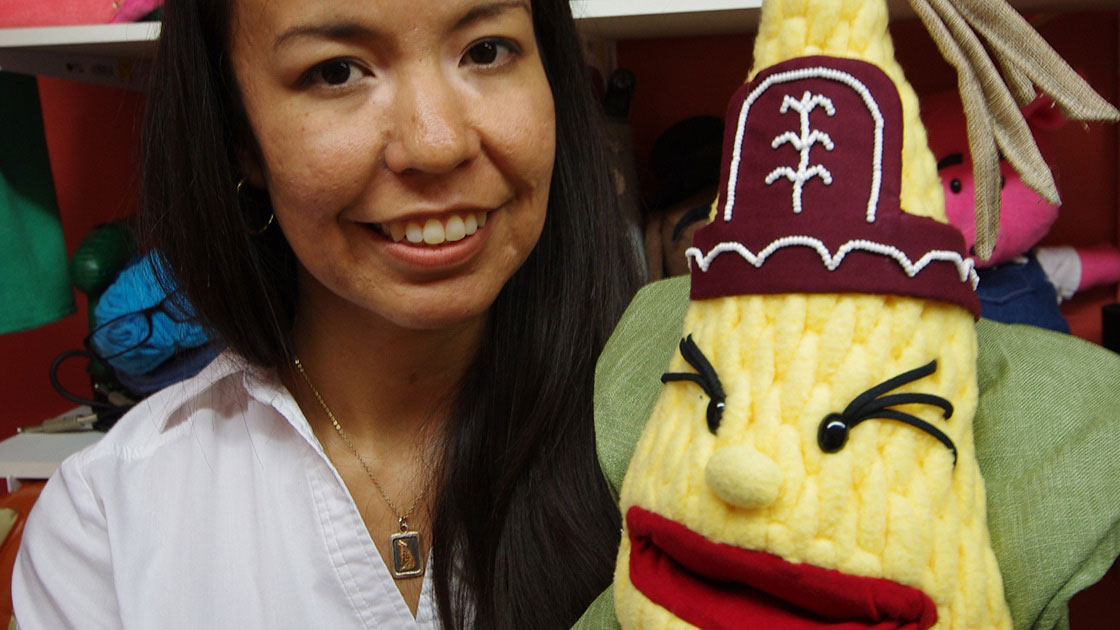
Katsitsionni Fox
Canada
English, Mohawk
2021
8 min.
Documentary Short
Marion Delaronde is a member of the Kanien'kehá:ka, also known as the Mohawk Nation in the Kahnawake territory. She produces a children’s television show entirely in the Mohawk language, which has been broadcast on public access television for over a decade. The show’s mission is to promote and preserve her people’s language, as there are fewer than 200 speakers left in her community. Marion believes a lot of problems can be solved with puppets and art.
Renée Sampson in collaboration with the Wapikoni team
Canada
W̱SÁNEĆ
2017
5 min.
Music Video
HELI, SET ŦTE SḰÁL ȽTE, which means “bringing our language back to life,” highlights the language revitalization efforts happening in the W̱SÁNEĆ territory, bordering the Salish Sea in southern British Columbia. Through prayer and song, the youth demonstrate the importance of carrying forth the legacy of their language and culture in their community.
Daniel Golding (Quechan)
United States
English
2021
57 min.
Documentary Feature
In the early to mid-twentieth century, ethnographer John Peabody Harrington amassed the largest collection of notes and field recordings of Native Californian languages, documenting just over 150 languages. Obsessed with his work and ridiculed by his peers, the controversial ethnographer hid his notes from his employer, the Bureau of American Ethnology. Chasing Voices tells the story of Harrington and how tribal nations are accessing his notes today—reviving their once sleeping languages and bringing together a new generation of language learners who are reclaiming their Native languages.
Tzutu Kan
Guatemala
Tzʼutujil Maya
2021
3 min.
Music Video
“Ixim Ulew” is an offering to that which sustains, to that which promotes growth and wellbeing, to the central form of sustenance Maya communities rely on today as they dig deep into the past. Honoring the sacred role of corn in allowing the existence of his people, Maya hip-hop pioneer Tz’utu Kan raps in his native language of Tzʼutujil Maya. The Mother Tongue Film Festival is honored to host the world premiere of “Ixim Ulew,” a prayer of gratitude to corn.
Don Lafoga, aka DonnieBeatz Productions
Samoa
Samoan
2020
4 min.
Music Video
Jay Shootah has been a standout in the Samoan rap scene, and “Le Ila” is no exception. Produced by DonnieBeatz and Shakhouse Production Studio, this diss track centers Samoan pride while showcasing Shootah’s pure rap talent.
Nitzia Ruiz Zapatero
Mexico
Ombeayiüts, Spanish
2019
3 min.
Music Video
In response to a call from an environmental festival, Lesvia Essesarte (Ikoots) wrote this song to raise awareness around environmental stewardship and highlight the importance of speaking her language, Ombeayiüts. Shot in San Francisco del Mar, in the state of Oaxaca, Mexico, Lesvia sings in a boat in a mangrove, showing the natural marine and cultural richness that her people have protected and that, for her, is essential to preserve.
Caio Cortonesi
Brazil
Akwẽ Xerente
2015
5 min.
Music Video
Beginning with gentleness and tranquility, “Hêwaka Waktû” by folk-metal group Arandu Arakuaa takes a sudden change of course, becoming an epic heavy metal performance. The song carries the unique elements of both heavy metal and traditional Guarani music, exclaiming the band members’ pride in their Indigenous identities.
Michelle Derosier
Tanya Talaga
Canada
English
2021
46 min.
Documentary Feature
Mashkawi-Manidoo Bimaadiziwin/Spirit to Soar is a closer look at what has happened in the wake of an inquest into the deaths of seven Indigenous students in Thunder Bay, Ontario, highlighting hard truths the country of Canada has long ignored: racism kills, especially when it presents itself as indifference.
Kyle Bell (Thlopthlocco Creek Tribal Town)
United States
English
2021
1 min.
Documentary Short
In this short for Smithsonian Channel, we’re reminded of the universal importance of mental health and how reconnection to ancestral knowledge and ways of being serve as a means of maintaining and cultivating wellness.
Max Walker-Silverman
United States, Guatemala
Chuj, English, Spanish
2020
16 min.
Narrative Short
A group of young men from the same town in Guatemala make a home for themselves in a very different town, very far from home. Speaking neither Spanish nor English, an Indigenous teen begins his new life in a small Rocky Mountain town. The story of friendship, hope, and home, starring all first-time actors, is the first film made in Chuj, their native language.
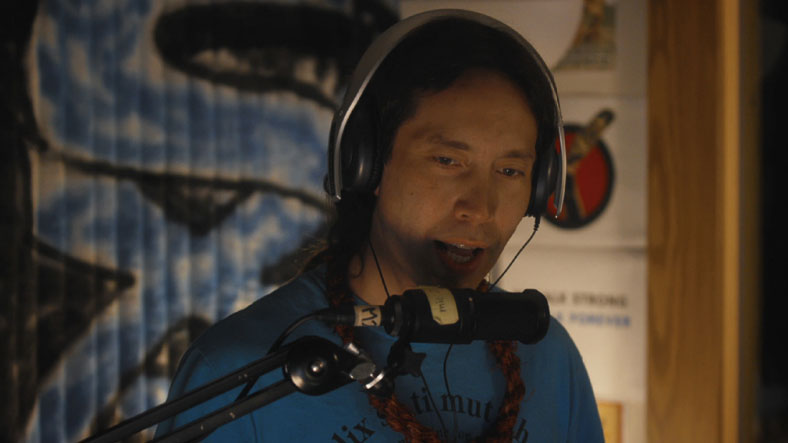
Banchi Hanuse
Canada
Nuxalkmc, English
2020
3 min.
Documentary Short
This short film captures a day in the life of 91.1 FM, Nuxalk Radio, a station built to help keep the Nuxalkmc language alive, broadcasting the laws of the lands and waters.
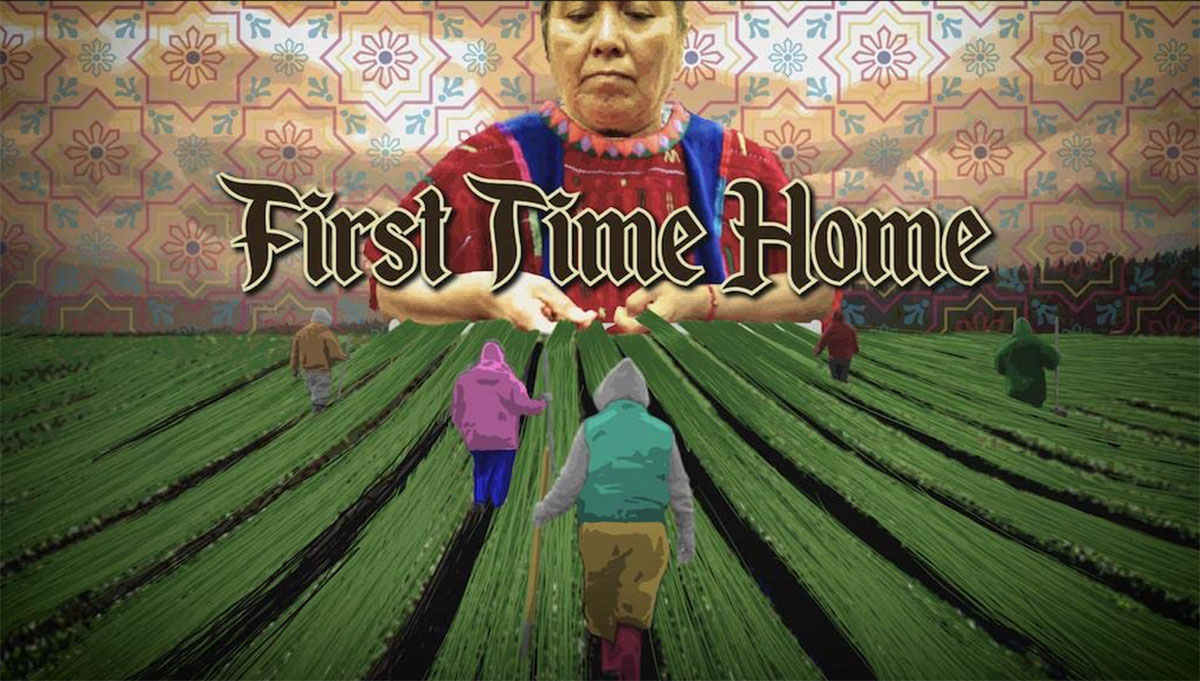
Esmirna Librado
Noemi Librado Sanchez
Esmeralda Ventura
Heriberto Ventura
United States
Spanish, Triqui, English
2021
30 min.
Documentary Short
When they learn their grandfather is ill, four cousins travel from their Triqui immigrant community in California to their ancestral village in Mexico for the first time. The teens record videos to share with their family members, who are farmworkers in the United States. Through a mixture of Spanish, Triqui, and English, they get to know their grandparents, aunts, and uncles. The cousins forge a link across thousands of miles, with a newfound pride in their Indigenous identity.
Eriberto Gualinga (Kichwa)
Ecuador
Kichwa
2021
17 min.
Documentary Short
While millions of people around the world go into lockdown amid the coronavirus crisis, a family in the Ecuadorian Amazon has opted to move deeper into the relative safety of the jungle. As they reconnect with dormant ancestral knowledge, their affinity with nature begins to flourish.
Burcu Esenç
Cantekin Cantez
Turkey
Ubykh, Turkish
2019
62 min.
Documentary Feature
After the death of Tevfik Esenç, the last person to speak the Ubykh language, in 1992, the language disappeared from the world. His granddaughter Burcu Esenç went on a journey following in her grandfather’s footsteps. The documentary film, directed by Burcu Esenç and Cantekin Cantez, tells the story of the people of Ubykh and the disappearance of a language from the world.
Luzbeidy Monterrosa Antencio (Wayuu)
Olowaili Green Santacruz (Gunadule)
Colombia
Wayuu, Guna (Kuna)
2021
12 min.
Animated Short
Siruma and Ina are two girls belonging to different South American Indigenous cultures: Wayuu and Gunadule. Both are facing the sea, living experiences full of learning about the importance and wisdom of grandmothers, and teaching us that from interculturality, thoughts and visions are shared.
Mariona Lloreta
Brazil
Portuguese
2018
13 min.
Narrative Short
On the brink of becoming a teenager, carefree Leo lives with his father and ailing grandmother. Going through the motions of a seemingly normal day, they navigate the complexities of their relationship and the trials of a changing season.
Eris Qian
United States
Mandarin, English
2020
10 min.
Narrative Short
A second-generation Chinese American woman connects to her roots by piecing together the memory of her mother’s last days, when Alzheimer’s disease stripped away their common language.
Nitzia Ruiz Zapatero
Mexico
Ombeayiüts, Spanish
2019
3 min.
Music Video
In response to a call from an environmental festival, Lesvia Essesarte (Ikoots) wrote this song to raise awareness around environmental stewardship and highlight the importance of speaking her language, Ombeayiüts. Shot in San Francisco del Mar, in the state of Oaxaca, Mexico, Lesvia sings in a boat in a mangrove, showing the natural marine and cultural richness that her people have protected and that, for her, is essential to preserve.
Adriana Otero Puerto
Mexico
Maya, Mayan Sign Language
2020
16 min.
Documentary Short
Chicán, meaning “snake's mouth” (chi’kaan), is a small Maya community in southern Yucatán. Generations of the community’s inhabitants have been born with hearing loss and have thus developed a distinct form of sign language unique to the community. This intimate portrait portrays the life of one young woman, highlighting the internal struggles she faces as she considers leaving her community.
Keanu Jones (Diné)
United States
Diné (Navajo), English
2019
3 min.
Documentary Short
Through powerful dialogue in the Diné language and moving visuals depicting Navajo men and women of the past and present, Indian Save The empowers Diné people to exert their identity with pride. This impactful film speaks to the suffering faced by Indigenous peoples in America, calling upon Native peoples to find their strength in the remembrance of those who fought for their survival.
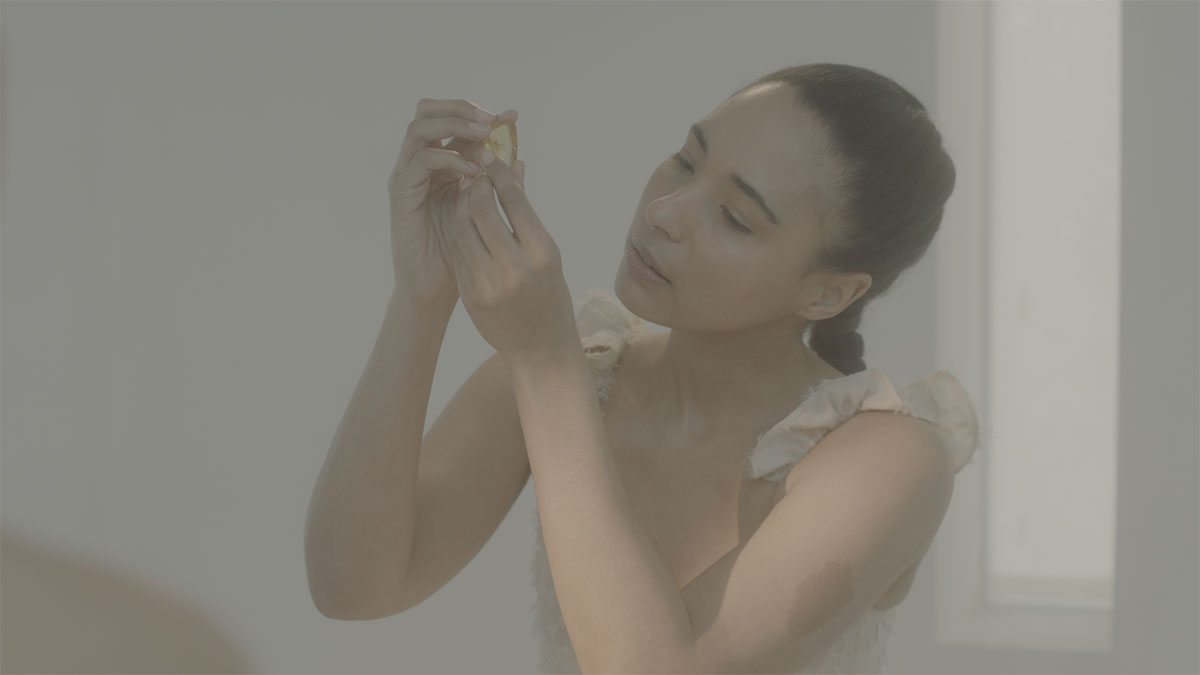
Rahe-wanitanama Alexa Wynter (Yukayeke Yamaye Guani)
United States
Taíno dialect of Island Arawak Wahiyani, English
2021
9 min.
Dramatic Short
A scientist of Indigenous Caribbean descent creates a new life through artificial intelligence, with hopes for freedom and maternal resolution.

Hinaleimoana Wong-Kalu
Dean Hamer
Hawai‘i
‘Ōlelo Kanaka Niihau
2022
56 min.
Documentary Feature
On Honolulu’s famed Waikiki Beach stand four giant boulders placed as a tribute to the four legendary mahu—individuals of dual male and female spirit—who brought the healing arts from Tahiti to Hawai‘i long ago. Although the stones have survived for centuries, their story has been hidden and the respected role of mahu erased. The Healer Stones of Kapaemahu documents the trail of post-colonial suppression through the eyes of a Native Hawaiian director—Wong-Kalu identifies as mahu—and uses rare archival materials, new historical findings, and vivid animation to bring the complete story back to life. This is the first feature documentary to be presented in ‘Ōlelo Kanaka Niihau, the only form of the Hawaiian language unbroken by foreign contact.
The Irish poet Oscar Wilde once said, “Imitation is the sincerest form of flattery that mediocrity can pay to greatness.” While that may serve as a general compliment for some, in the world of film, representation is everything. This panel brings together marginalized filmmakers to discuss the implications of misrepresentation in film. We explore what it means to have their cultures properly represented and the challenges that they have faced in the entertainment industry in order to practice their craft.
This two-part roundtable considers the complicated legacies of the Yanomamö Film Series (1969–1976), a groundbreaking ethnographic media project that expanded the boundaries of documentary. Distributed by Documentary Education Resources (DER) and archived in the Smithsonian’s National Anthropological Archive, the series emerged from a collaboration between anthropologist Napoleon Chagnon (1938–2019), filmmaker Tim Asch (1932–1994), and Yanomamö communities in southern Venezuela and northern Brazil.
The collaboration resulted in 110,000 feet of film and 21 films, including some of the most celebrated ethnographic films of the period: The Feast (1970), The Ax Fight (1975), and A Man Called “Bee” (1974). But this work was not without controversy as Chagnon’s mischaracterizations of the Yanomamö as the “Fierce People” has had ongoing impacts on communities, and scholars have called into question his ethics.
The first roundtable is focused on the technical and aesthetic issues underlying the processes of preservation and digital restoration. The second panel explores the value of these films for the Yanomamö and anthropologists interested in more equitable collaborations. Acknowledging the painful legacies of anthropology, these roundtables will provoke discussions about the value of historical works and the potential for redress and corrected narratives.
This program is co-presented by Documentary Educational Resources and the National Anthropological Archives.
Restoration of the Yanomamö Film Series was graciously funded by a National Film Preservation Foundation grant and individual donors.
Language reclamation goes beyond language learning and daily use to reclaim relationships with ancestors, the land, and community. The films in this program represent different ways of learning, through legacy documentation, situating language in the home, youth-centered approaches, and creating new modes of expression. Carly Tex, director of the Advocates for Indigenous California Languages Survival (AICLES), led the discussion on the challenges of language reclamation in North America with Ron Corn, Jr., featured in Living Language: Menominee Language Revitalization, and Quirina Geary, a Tamien and Mutsun cultural practitioner who is learning her language through the Breath of Life approach featured in the film Chasing Voices.
This event is co-presented with the National Museum of Asian Art.
Introduced by Tom Vick (Curator of Film, National Museum of Asian Art), filmmaker Burcu Esenç and producer Umut Egitimci and Mary Linn (Curator of Language and Cultural Vitality, Center for Folklife and Cultural Heritage) will focus on reconnections made during the filming I Had a Dream (Bir Rüya Gördüm), the life of Tevifik Esenç, and the wider history of the Ubykh language.
Every year, Mother Tongue presents a roundtable with women directors to honor the role of women in language transmission. This year, we bring together women directors from communities in Canada, the United States, and Mexico to discuss the power of language in their films, expanding on the courage that is required in portraying difficult realities for a more balanced future.

In a bonus presentation, the Columbia University School of the Arts co-hosts a free screening of the documentary feature Helena of Sarayaku, the story of a teenager who travels to her motherland in the Ecuadorian Amazon for the traditional Uyantza Raymi festival, then is confined there at the start of the COVID-19 pandemic. The film is available to stream starting Monday, March 7, in advance of the Q&A with director Eriberto Gualinga on March 10.
The Mother Tongue Film Festival is pleased to partner with the Institute on Collaborative Language Research (CoLang), hosted by the University of Montana and Chief Dull Knife College, to bring the feature film Sooyii to Blackfoot territory. After screening, hear from Jesse DesRosier, the language and dialect coach for the film and who plays Father. Hali Dardar from the Center for Folklife and Cultural Heritage will lead the discussion and Q&A on language reclamation and issues of representation in the film.
This free, in-person event is open to the public in the University Center Theater #3 at the University of Montana. Doors open at 6:30 p.m., and the film starts at 6:50 p.m.
Sooyii (2022, United States, 80 min.)
Dir. Krisztian Kery. In Blackfoot and Shoshone with English subtitles.
In early eighteen-century North America, European invaders made their presence known to most of the Indigenous populations. However, some people in the north have remained untouched. The Pikuni (Blackfeet) Nation are among them. A group of Shoshone Warriors maliciously infect a Pikuni village with smallpox using a trick they learned from European traders: passing on goods that are infected with the virus. To the Pikuni, this new and unseen killer is an unstoppable curse. A young Pikuni man, Older Brother, is strangely spared and struggles to understand why. In a state of hopelessness, he tries to infect himself but then encounters a Shoshone woman fleeing from her white captors. He is faced with a terrible dilemma: protect her or trade her back to her captors to attain the one thing that might give other Pikuni villages a fighting chance?